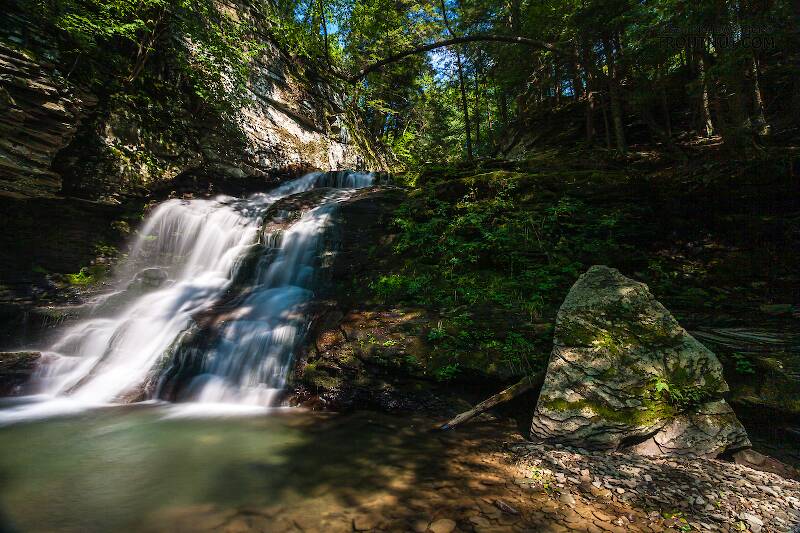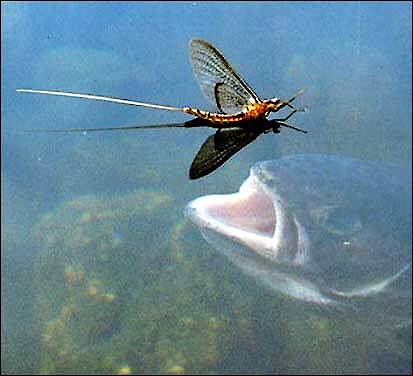
Blue-winged Olives
Baetis
Tiny Baetis mayflies are perhaps the most commonly encountered and imitated by anglers on all American trout streams due to their great abundance, widespread distribution, and trout-friendly emergence habits.
Featured on the forum

I was not fishing, but happened to be at an unrelated social event on a hill above this tiny creek (which I never even saw) when this stonefly flew by me. I assume it came from there. Some key characteristics are tricky to follow, but process of elimination ultimately led me to Sweltsa borealis. It is reassuringly similar to this specimen posted by Bob Newell years ago. It is also so strikingly similar to this nymph from the same river system that I'm comfortable identifying that nymph from this adult. I was especially pleased with the closeup photo of four mites parasitizing this one.

Troutnut is a project started in 2003 by salmonid ecologist Jason "Troutnut" Neuswanger to help anglers and
fly tyers unabashedly embrace the entomological side of the sport. Learn more about Troutnut or
support the project for an enhanced experience here.
Coha on Nov 5, 2020November 5th, 2020, 6:59 am EST
Heres a little guide on how Barry Ord Clarke, store, protect and organize both natural and synthetic materials for fly tying.
Fly tying materials Organization & Storage
Fly tying
Fly tying materials Organization & Storage
Fly tying
Quick Reply
Related Discussions
Topic
Replies
Last Reply
10
May 23, 2017
by David82nd
by David82nd
2
Nov 18, 2014
by JackDaTrout
by JackDaTrout


